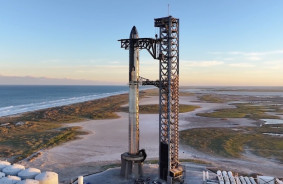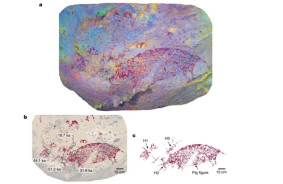Intuitive Machines, Lunar Outpost, and Venturi Astrolab will participate in NASA's competition to develop a lunar vehicle that will allow movement on the Moon - a contract with a potential value of $4.6 billion for the next 13 years.
The Lunar Terrain Vehicle (LTV) will help astronauts explore the lunar south pole region, where frozen water is believed to be present - this is where NASA plans to establish a base camp.
According to NASA requirements, all three companies must develop a vehicle that can accommodate two astronauts in specialized suits, can handle extreme terrain conditions, and will be equipped with robotic functions for remote control (so that the space agency can conduct tests and research even in the absence of humans on the Moon).
Next, the companies must complete a "technical and economic feasibility order" and provide proposals for further development, delivery of the vehicle to the Moon, and testing its efficiency and safety before the Artemis V mission.
"We will use the LTV to travel to places that we could not otherwise reach on foot," said Jacob Bleacher, Chief Scientist in the NASA Systems Analysis and Concepts Directorate. "Through crewed missions during remote operations, we will enable work on the Moon for an extended period."
Intuitive Machines is currently known for becoming the first private aerospace company to land (albeit sideways) a spacecraft on the Moon - the first U.S. lander in 50 years to make a lunar landing.
The Artemis program is designed to ensure a sustained human presence on the Moon and eventually launch missions to Mars. Artemis II, originally planned for November 2024, has been rescheduled for September 2025 - a mission with 4 people onboard will follow the path of "Orion," which orbited the Moon in 2022 without a crew. As for the Artemis III mission, which is intended to return humans to the lunar surface for the first time since 1972, it is now planned for September 2026 - 9 months later than previously planned.
Earlier, Ars Technica journalist Eric Berger shared information on how much money NASA will need to land astronauts on the Moon as part of the Artemis program over the next 5 years - the amount exceeds $41 billion.
NASA has also acknowledged that the development and operation of the SLS rocket are "not affordable." The project turned out to be much more expensive than planned - the development of the rocket cost American taxpayers $11 billion, and the cost of one launch of "Orion" on SLS is $4.1 billion ($2.2 billion for the rocket itself, another $0.57 billion for necessary ground costs, and the rest for the cost of American and European components of the "Orion" spacecraft).













Comments (0)
There are no comments for now